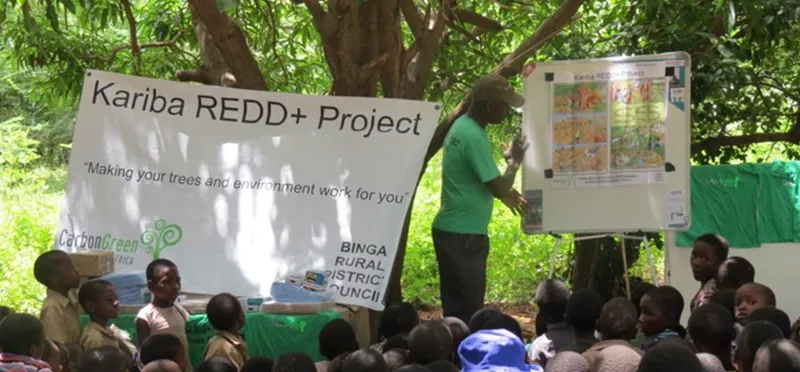Enteric Methane: To Generate Confidence, Quantify the Variance
Attacks on the credibility of agricultural decarbonization efforts continue. The most recent came from agriculture industry blogger Janeet Barnard in her aggressively entitled piece “The impending pop of the climate bubble.” In it she goes right after weak measurement as the source of the problem:
I recently heard someone say with a straight face, “There are a lot of science questions preventing strong monitoring and reporting on the quality of ag credits, but ag credits are quite popular in the market." The cognitive dissonance between the first and second part of the sentence is what feels so bubbly.
In order to generate confidence in the integrity of agricultural decarbonization efforts (and specifically in enteric methane efforts), the industry must learn to prove its claims through science and data. MRV must have the accuracy to earn the trust of all stakeholders, and have the affordability to fit within the industry economics.
Quantifying the Variance in Soil
As the industry works to find the MRV solution with that right balance between accuracy and affordability, the breadth of sampling is a major issue. To understand the soil carbon on a 500 acre farm, does the soil need to be sampled on every acre? Just one acre? Or something in between? And the same questions can be asked for enteric methane from a 1000 cattle farm. Just one cow? All thousand cows? Once a day? Once a year? More sampling provides more accuracy, but it of course also drives up cost.
To ascertain the proper breadth of sampling and thus the cost required to achieve necessary accuracy, the variability of greenhouse chemical levels must be understood. The soil carbon sector, for example, has been under perhaps the greatest scrutiny for unsubstantiated claims of impact and greenwashing. But before the necessary amount of sampling is determined in order to provide scientifically confident evidence of claims, the degree of variability of carbon in the soil from one plot to another or “spatial heterogeneity” must be understood.
Fortunately Dr. Paige Stanley of Colorado State University published such a study earlier in 2023. The study took and analyzed over 1,000 soil samples to better understand how much soil carbon varies spatially. Though Dr. Stanley is an environmental and animal scientist, she enlisted two Statistics co-authors from UC-Berkeley for the study, as it employed deep statistical analysis to ascertain the sample sizing needed to contend with carbon level variability. The study concludes with a set of tools that project developers can utilize to calculate the number of samples required in order to accurately measure soil carbon.
The study states that most every soil carbon protocol does not require sufficient sampling in order to generate statistically accurate measurements. Dr. Stanley goes on to mention that given needed sampling, the cost of measuring exceeds the market value of soil carbon credits currently. So while accurate MRV is currently underwater economically in soil carbon, the industry at least through Dr. Stanley’s work has an understanding and a goal of the cost-effectiveness that its MRV technology must achieve in order to generate scientific confidence in its reduction claims.
Variance in Enteric Methane
In enteric methane there is tremendous variation emissions across many dimensions:
Individuals
There is considerable variation between individual cows of the same breed.
Groupings
There is significant variation of emissions between breeds of cows and farm groupings of cows.
Inputs
The feed provided cows has a large impact on emissions. For example, a 10% increase in the digestibility of feed yields a 12-20% reduction in methane production.
New feed additives show great promise in inhibiting enteric methane emissions. However there remains strong variability in their impacts. For example, in a recent study in Australia that claimed to be the largest ever, the application of a bromoform supplement yielded a 28% reduction while the researchers were hoping for 80%; the scientists cannot account for why.
Timing
Lastly there is significant temporal variation. In the course of the day methane production varies by as much as five times, and annual cycles also affect emissions.
Much as high variance in carbon levels in soil requires high sampling volume in order to produce statistical accuracy, enteric methane measurements are also challenged by these numerous significant dimensions of variability. However no study like Dr. Stanley’s has been undertaken in order to quantify all of these variability dimensions and create standards on sampling levels for enteric methane measurement.
The feasibility of such research is challenged however by the state of enteric methane measurement technology. While respiration chambers can accurately measure cattle emissions in laboratory settings, no technology exists that can accurately measure actual emission levels on farms (however stay tuned to Rumission … the solution is coming soon). Without such technology a comprehensive study like Dr. Stanley’s for enteric methane faces significant barriers.
Nevertheless the enteric methane community, as it considers research priorities, must put emission variability at the top of the list. While there is growing excitement around technologies to mitigate enteric methane, actual execution of the mitigation will require confidence in reduction claims backed by science and data. The enteric community must prioritize emission variability research now to ensure that future mitigation momentum does not become a bubble that is popped by its own lack of evidence.



